Spring tours in 2021 to Yancheng, Xinghua, Huai 'an, Xuyi and Nanjing

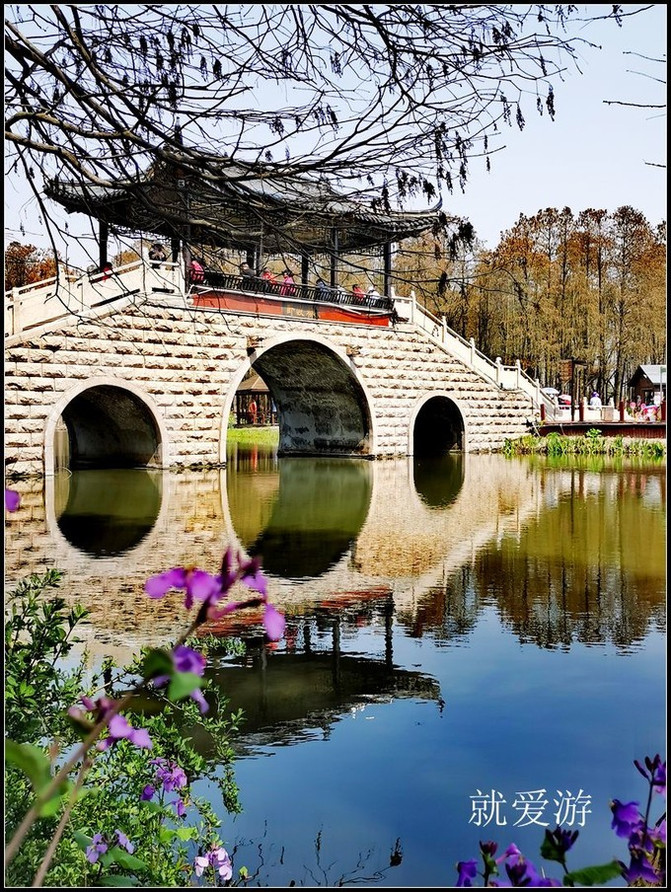




















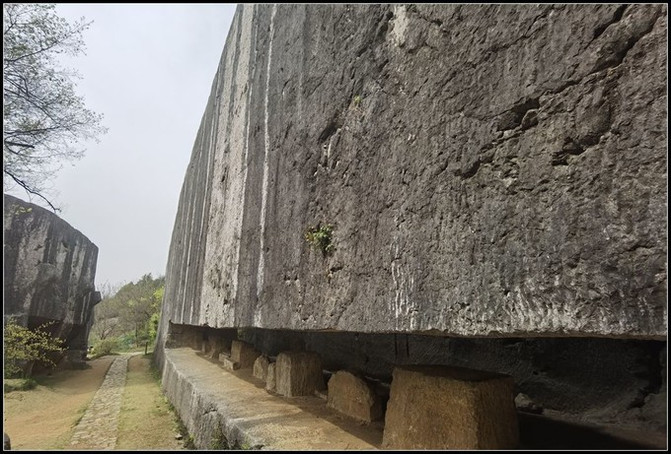


March in Jiangnan is full of spring. Our couple traveled from Yancheng, Xinghua, Huai 'an, Xuyi in northern Jiangsu to Nanjing for eight days to enjoy the spring scenery in Jiangnan and taste the beautiful food of Huaiyang.
Day 1: Guangzhou-Yancheng
Take a Southern Airlines flight from Guangzhou to Yancheng, take a taxi to the hotel, have lunch at Huaiyang Tower next to it, walk to the New Fourth Army Memorial Hall, and take the bus to the former site of the New Fourth Army Reconstruction Military Headquarters, China Haiyan Museum, and Water Street.
Accommodation: Yancheng Slow Life Hotel

Fly to Yancheng Airport in the morning on China Southern Airlines flight.

Take a Didi taxi from the airport to the city and stay at the booked Slow Life Hotel. The hotel is in a good location. Downstairs is the famous time-honored restaurant in Yancheng "Huaiyang Tower".


Putting down our luggage, we went to Huaiyang Tower for lunch. Huaiyang Tower is a famous time-honored restaurant in Yancheng. Huaiyang cuisine is one of the four traditional Chinese cuisines and originated in Yangzhou and Huai 'an. The cuisine is full of Huai and Yang characteristics. Most of the raw materials are aquatic products. Most of the Huaiyang cuisine is based on river delicacies, supported by top-notch cooking techniques, superior flavor and quality, and pursuit of perfection. It is appreciated by both elegance and customs without losing its elegance, especially harmony. The unique concept of refinement, refinement, clarity and novelty. Yancheng is located in northern Jiangsu, bordering Yangzhou and Huai 'an, and belongs to Huaiyang cuisine.

Huaiyang Ruandou, the authentic Huaiyang dish, is actually rice eel, and the taste is really good.

One of the representatives of Huaiyang cuisine, braised lion's head. A major feature of eating in northern Jiangsu is the large portions of the dishes. Two people don't dare to order more when they go to a restaurant, otherwise it will be wasted.
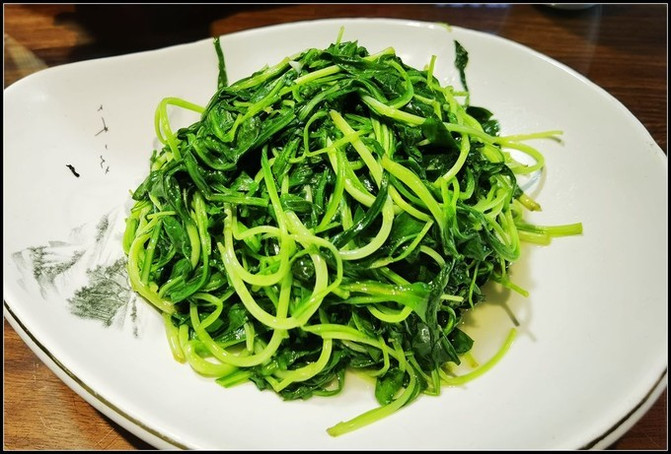

After lunch, we walked about 10 minutes from the hotel to the New Fourth Army Memorial Hall. The New Fourth Army Memorial Hall is a comprehensive memorial hall reflecting the history of the New Fourth Army's War of Resistance. The New Fourth Army Memorial Hall consists of three parts: the main museum area, the Jianjun Square, and the former site of the military headquarters. Yancheng was the seat of the military headquarters when the New Fourth Army was rebuilt after the Southern Anhui Incident.
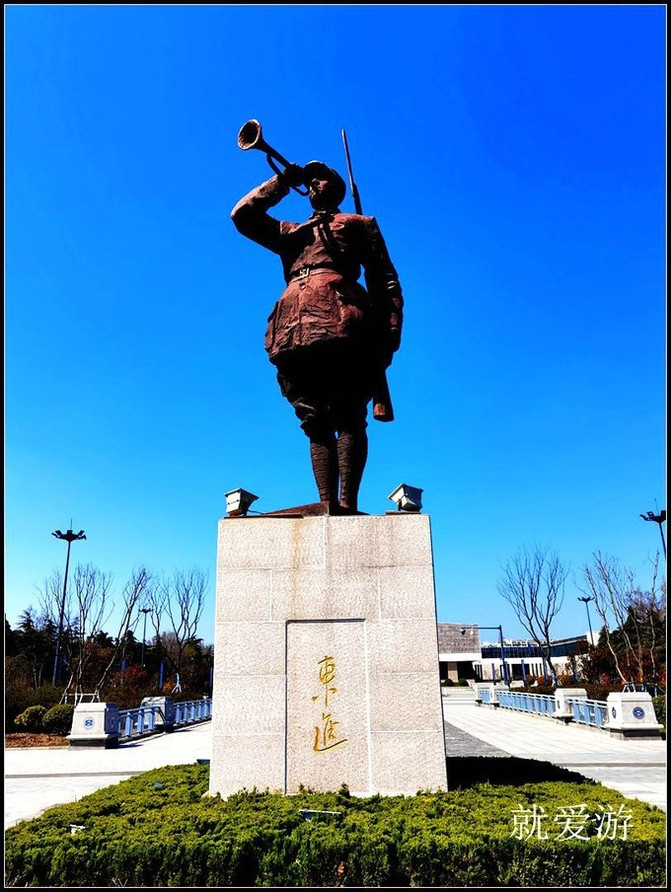
The new Fourth Army of the National Revolutionary Army, referred to as the New Fourth Army, belongs to the combat sequence of the National Government. It is an anti-Japanese armed force led by the Communist Party of China and one of the predecessors of the People's Liberation Army of China. After the outbreak of the Anti-Japanese War in 1937, the Communist Party and the Kuomintang negotiated and reached an agreement. In October, the Red Army guerrillas in the eight provinces of Jiangnan were reorganized into the new Fourth Army of the National Revolutionary Army. Ye Ting was appointed commander and Xiang Ying was appointed deputy commander. In January 1941, the Southern Anhui Incident broke out. Most of the New Fourth Army's headquarters and its southern Anhui troops were captured, separated or sacrificed. Commander Ye Ting was detained during negotiations, and Deputy Commander Xiang Ying was killed. The National Government announced that the new designation of the Fourth Army of the National Revolutionary Army would be revoked immediately;. The Communist Party of China responded tit-for-tat and announced the reconstruction of the military headquarters, appointing Chen Yi as acting commander of the New Fourth Army, Zhang Yunyi as deputy commander, and Liu Shaoqi as political commissar. In accordance with the instructions of the Central Committee of the Communist Party of China, the rebuilt New Fourth Army penetrated deep into enemy lines in Central China to carry out anti-Japanese guerrilla warfare and establish anti-Japanese base areas. During the eight-year War of Resistance Against Japanese Aggression, the New Fourth Army resisted and contained 160,000 Japanese troops and 230,000 puppet troops, and fought more than 22,000 times, including more than 19,000 battles against the Japanese puppet troops and wiped out more than 310,000 Japanese puppet troops; and more than 3,000 anti-stubborn self-defense operations. The New Fourth Army suffered more than 89,000 combat casualties. The New Fourth Army has grown from an initial strength of more than 10,000 people to a main force of more than 215,000 people.

In the middle of the square, the New Fourth Army's reconstruction military headquarters monument has the name inscribed by Li Xiannian on the front and the inscription "Yanfu Alliance" written by Huang Kecheng on the back.







Leaders of the New Fourth Army in the early days of its founding


Leaders of the six detachments of the New Fourth Army and the pro-close column before the Southern Anhui Incident



After the Southern Anhui Incident, he was the leader of the reorganization of the New Fourth Army's headquarters.

After the reorganization of the New Fourth Army's headquarters, he was the chief military and political officer of the seven divisions affiliated to the New Fourth Army.

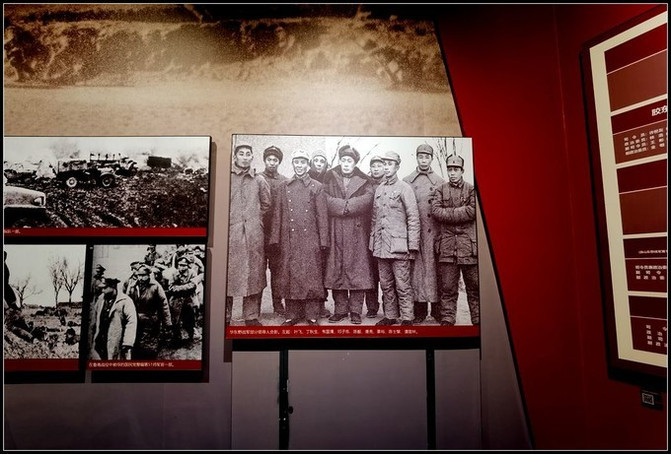

Veterans of the New Fourth Army fingerprint on the wall.
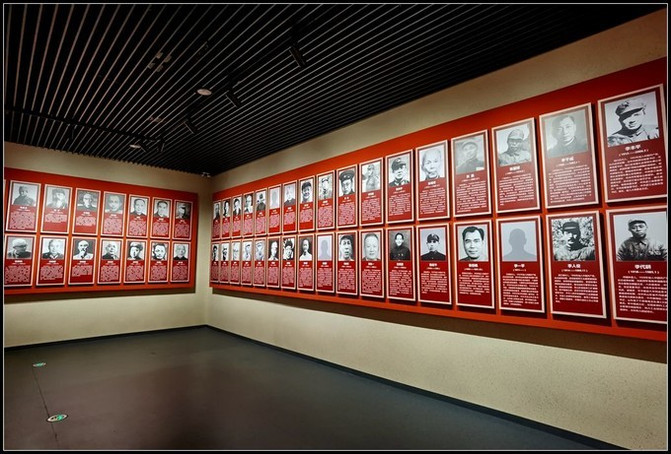
He was a famous general and leader of the New Fourth Army

Mount Tai Temple in Yancheng. It was the seat of the military headquarters when the New Fourth Army was rebuilt after the Southern Anhui Incident. The old residences, cultural relics, historical materials, photos, etc. of Liu Shaoqi, Chen Yi and other leaders are displayed.








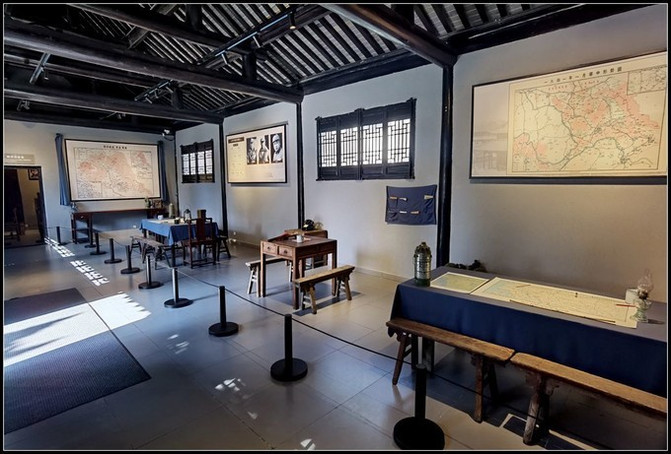

In March, Yancheng has a sunny wind and beautiful sun, and flowers are in full bloom.

The Sea Salt Museum in Yancheng is a large-scale special museum that reflects the long history and civilization of Chinese sea salt.


As an open coastal city, Yancheng is rich in resources and unique in ecology. The coastal beach area accounts for 67% of Jiangsu Province. It is the largest and most potential land reserve resource in Jiangsu Province, and the coastline accounts for 56% of the province. Yancheng has a history of salt production for more than 2100 years and is the source of a long salt culture in the lower reaches of the Huaihe River and the coast of the Yellow Sea. Throughout the ages, Haiyan culture has always been the main body and essence of Yancheng culture, and has become the cultural root of this city.

The sculptural building in the shape of white salt crystal allows people to appreciate the historical civilization of the ancestors who boiled the sea into salt. The completed China Sea Salt Museum system reflects the development history of sea salt in my country, displays research results introducing sea salt culture, and collects and displays cultural relics and materials on the history of sea salt in my country. The museum uses wax figures, sculptures, sand tables and other demonstration techniques to show the multi-layered cultural scenes of sea salt production and the life of salt people such as refining stewed and frying salt, and drying the sea for salt.











Yancheng Water Street Style Area has many modern antique buildings built and is the main scenic spot of Haiyan Historical and Cultural Style Area. This scenic spot is committed to highlighting local cultural characteristics. Here, you can watch folk tricks and cultural performances, taste local snacks, and buy tourist cultural products and local famous, special and excellent small commodities.












We still chose to have dinner at Huaiyang Tower that night. The two people ordered a large portion of dried dried shredded rice and filled a large basin. The dried shredded bean beans were like noodles and very delicious, but the two people didn't finish it.
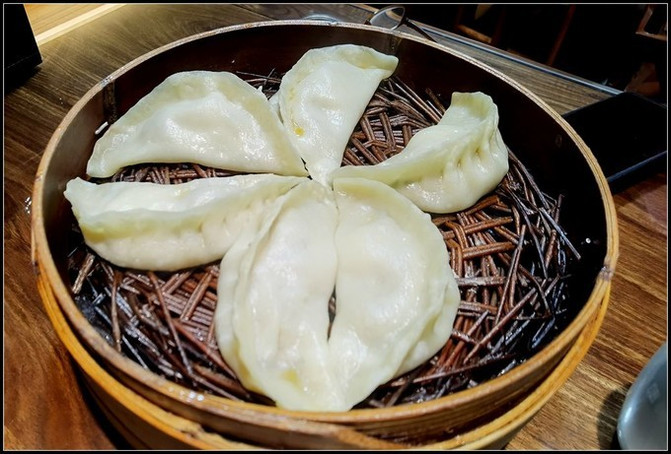
A cage of steamed shrimp dumplings is big, juicy and delicious.

There are many places to visit in Yancheng, such as Red-crowned Crane Wetland Park, Zhonghua Elk Park, etc. We were not very interested. In the morning, we took a bus directly at the passenger terminal to Xinghua (about 2 hours). After arriving at the hotel, we put down our luggage and took a taxi.(37.6 yuan) Go directly to Xinghua Qianduo Cauliflower Scenic Area. I saw many tourists, and the sun was shining directly at noon, so I simply took a taxi (30 yuan) to Lizhong Water Forest Park first, and then took a taxi (26.6 yuan) from Lizhong Water Forest Park to Qianduo Cauliflower Scenic Area. After swimming, take the 2 bus (3 yuan/person) back to Xinghua City to visit the old city of Xinghua.
Accommodation: Xinghua Motel Hotel

After breakfast, the hotel takes a taxi to Yancheng Bus Station and takes the bus to Xinghua. It is 28 yuan/person.


After arriving in Xinghua, stay at the Motel Chain Hotel in Laocheng District.


Take a taxi from the hotel to visit the scenic spots.


Lizhong Water Forest Park is located near Shunsheng Bridge on Xingsha Highway in Qianduo Town, Xinghua City, Jiangsu Province, with a forest area of 1050 acres. In May 2014, the National Tourist Attraction Quality Rating Committee officially approved the Lizhong Water Forest Scenic Area in Xinghua City as a national 4A-level tourist attraction. This was Xinghua's first national 4A-level scenic spot and the only high-level tourist attraction approved in Taizhou City that year.



In the early 1980s, in order to rationally develop and utilize wasteland resources, local cadres and the masses developed the wasteland here into rows of rows, planted tree varieties such as ascends and metasequoia that were suitable for growth in water, and planted taro, rapeseed and other cash crops in the middle of the forest. Today, more than 100,000 trees such as Metasequoia, Astrosum Astrosum and other species have grown into tall, dense, vibrant and beautiful aquatic gardens.

Wobo Bridge in the scenic area. The stone bridge lies on the waves, and the pavilions and towers are Lingyun

In March, everything in northern Jiangsu is recovering. It is the season when rapeseed flowers are in full bloom. It is also the season when peach blossoms, cherry blossoms and other flowers are in full bloom. The scenery is extremely beautiful.







Lizhong Water Forest Park has built many ancillary facilities for tourists to visit. The wooden plank road leads to winding paths, and wooden tables and chairs are full of wild fun.
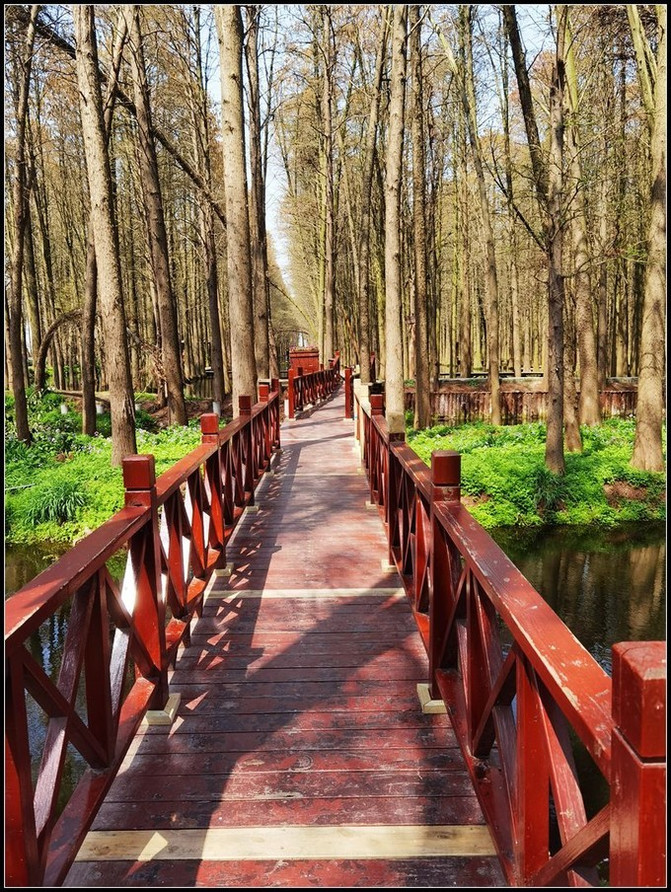




Tourists can choose to take bamboo rafts to visit the beautiful scenery of the scenic spot.


The forest stock in Lizhong Water Forest Park is 12,500 cubic meters. Form a unique water town landscape with water in the forest, fish in the water, and birds in the forest. There are many species of birds and wild animals such as owls, wild ducks, egrets, black rhododendrons, grass parrots, magpies, etc., with more than 60,000 in the forest at most. It is the largest artificial wetland forest ecological reserve in Lixiahe area.




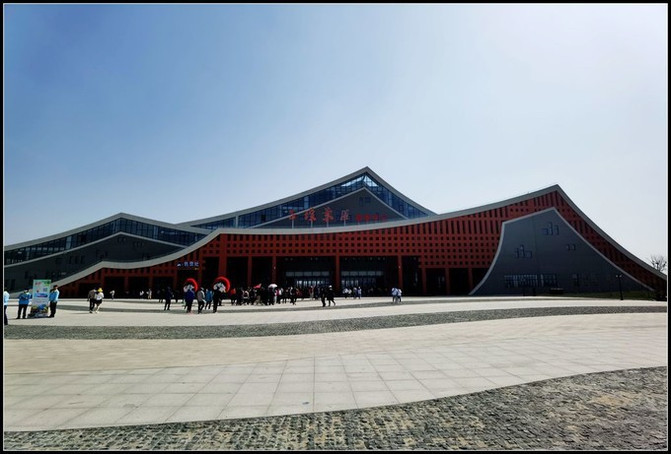
Qianduo Cauliflower Scenic Area is less than 10 kilometers away from Lizhong Water Forest Park by taxi.



The total area of Qianduo cauliflower Scenic Area is nearly 10,000 acres, and the core area of cauliflower sightseeing is 4600 acres. The natural landscape of the scenic area was formed 750 years ago. In Zeguo, which is particularly short of soil, the ancestors here took soil from underwater and piled it into piles one by one to build piles of fields. Every spring, the planted rapeseed is full of yellow flowers, forming a beautiful and spectacular sea of rapeseed flowers.


In the spring season, golden rapeseed flowers bloom on the mound fields, like auspicious clouds dancing on the water, or like flowing clouds scattered in the world. People are placed among the endless thousands of cauliflower flowers and feel the intoxicating flowers and flowers coming with the wind. They feel relaxed and relaxed and beautiful.

Every pile has yellow flowers, and thousands of villages and thousands of households have yellow flowers. The scenery in northern Jiangsu competes in Jiangnan, and the most beautiful yellow flowers are in Xinghua!




Cruise ships shuttle through thousands of sea of flowers.


Tourists can choose to take a cruise ship to swim in the sea of rapeseed flowers. However, cruise ships are only one-way, and tourists need to walk back to get there. When we arrived, it was the peak tourist season, and it was the moment when tourists were most concentrated. Tourists waiting for a boat had filled the entire square of the cruise ship terminal, and it would not be possible to board the boat for an hour.
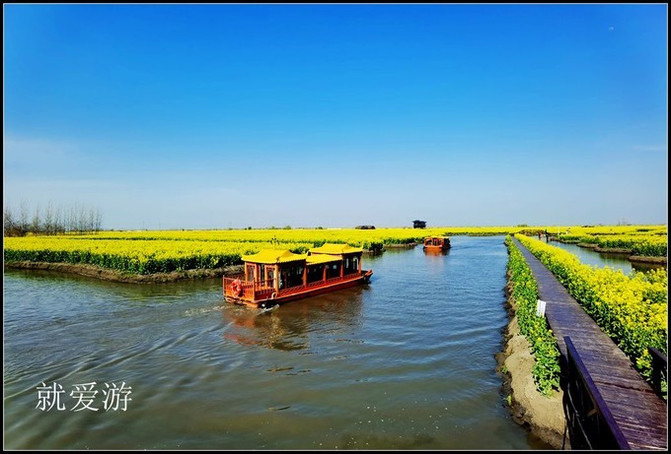






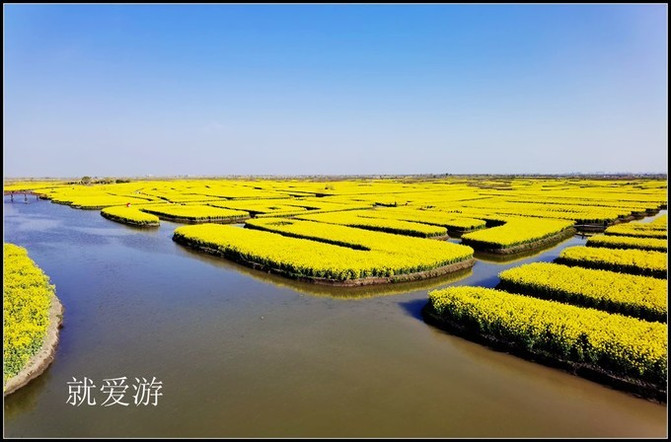





Return to Xinghua in the afternoon and visit the old streets of the Laocheng District. Xinghua City is a county-level city and belongs to Taizhou City, Jiangsu Province. Xinghua was called Zhaoyang in ancient times, also known as Chu River, and has a long history. Xinghua Old Street has preserved many intact Ming and Qing dynasties buildings and former residences of historical celebrities.





The smooth and smooth Daqing stone road and the antique old street.








Experience Xinghua morning tea in the morning, visit the old city of Xinghua in the morning, and take a bus to Huai 'an at noon (60 yuan/person). I originally planned to have a good time in Huai' an, but due to the kind invitation of my comrades, I could only take 2 hours to get to several major attractions in Huai 'an. I checked in and went directly to Xuyi.
Accommodation: Xuyi Dongchen International Hotel

In the morning, I found a time-honored restaurant next to the hotel to experience the morning tea culture in northern Jiangsu and taste the morning tea delicious food in Xinghua.








Xinghua is the hometown of Zheng Banqiao, a famous literati in the Qing Dynasty. Today, Zheng Banqiao's former residence has become a tourist attraction

Zheng Banqiao's original name was Zheng Xie, the word Kerou, Li 'an, and also Banqiao. He was also known as Mr. Banqiao. He was born in Xinghua, Jiangsu Province. He was a scholar in the Kangxi Dynasty, a scholar in the Yongzheng Dynasty, and a scholar in the first year of Qianlong. He once served as the county magistrate of Fan County and Weixian County in Shandong Province, with remarkable political achievements. He later lived in Yangzhou and made a living selling paintings. He was a famous painter, painter and writer in the Qing Dynasty. He is an important representative of the Eight Eccentrics of Yangzhou.

Zheng Banqiao only painted orchids, bamboos, and stones all his life. He claimed to be an orchid that never thanks in all seasons, a bamboo that grows green in all its sections, an invincible stone, and a person who remains unchanged for thousands of years. His poetry, calligraphy, and painting are known as the Three Wonders in the world, and he is a relatively representative literati painter in the Qing Dynasty. He left behind to awaken the world and said that "it is rare to be confused", and he pursued a life where "I would rather eat without meat than live without bamboo."











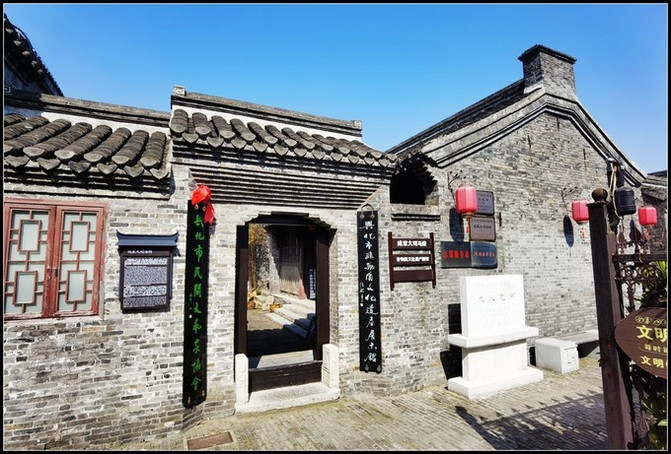


Dongyue Temple is a famous Taoist jungle in Xinghua history. It is located on the east street of Xinghua City. Dongyue Temple covers an area of more than 800 square meters. It was built in 1341 AD and has a history of more than 600 years. It is a well-preserved place for religious activities.


Xinghua Old Street

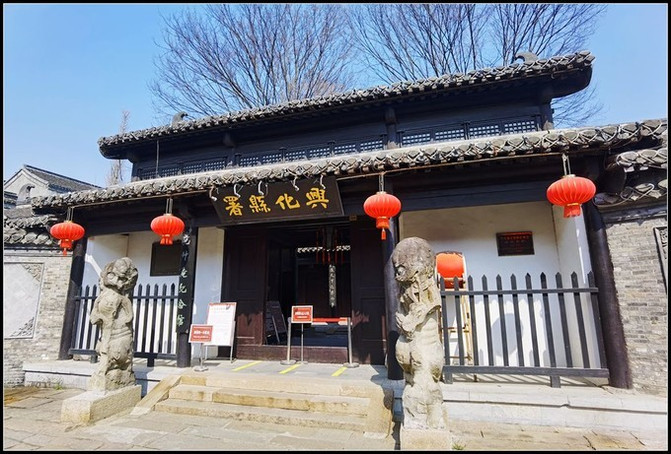
The well-preserved Xinghua County Office






Across the wall from the county office is the private garden of Li Xiaobo, a salt merchant in the Qing Dynasty, known as the "Li Garden".



The luxurious "boat hall" is a witness to the luxurious life of salt merchants in the Qing Dynasty.





The building "Four Pailou" in the Ming Dynasty.

The building "Four Pailou" in the Ming Dynasty.

A total of 47 plaques dating from the Ming and Qing Dynasties are hung inside and outside the Sipailou.






Old Street Style



Arrive at Xinghua Passenger Station at 1:00 noon and take the bus to Huai 'an.

Huaian South Passenger Station. Huai 'an is an important central city in northern Jiangsu. It is located at the intersection of the ancient Huaihe River and the Beijing-Hangzhou Grand Canal. It houses Hongze Lake, China's fourth largest freshwater lake. It is a national historical and cultural city with a history of more than 2200 years. It is known as China's "Capital of Canal". It is the main birthplace of Huaiyang cuisine with Yangzhou and others, and one of the birthplaces of ancient culture in the Jianghuai Basin. We originally planned to stay in Huai 'an for two nights to have a good sightseeing. Unexpectedly, our comrades who used to work at the Guangzhou Naval Academy worked in Xuyi County in Huai 'an area after changing jobs. When we heard that we arrived in Huai' an that day, we immediately drove to Huai 'an South Passenger Station and insisted on dragging us to Xuyi to play. The kindness of his comrades was difficult to refuse, so he had to obey. However, at our request, we asked them to drive us to check in on several major scenic spots in Huai 'an first.

Huai 'an has outstanding people and is also the hometown of Premier Zhou. The Zhou Enlai Memorial Hall is located on the Peach Blossom Grove outside the North Gate of Huaian City. It was completed on January 16, 1992. Deng Xiaoping inscribed the name of the museum, and Jiang Zemin, Li Peng, Li Xiannian, Yang Shangkun and other comrades wrote inscriptions for the memorial hall. The Zhou Enlai Memorial Hall is a large-scale memorial hall established to commemorate Zhou Enlai, the founding premier of the People's Republic of China. It is a majestic monument that shows the style of the great man of Zhou Enlai's generation.


The area inside the Zhou Enlai Memorial Hall is very large, like a big park. There is no one that cannot be seen in an hour or two. Our time is limited, so we can only take a photo at the door and sign up.


The second attraction of Huaian Tour is the Governor's Water Transport Department Courtyard Ruins Park located in the center of Huaian City. This is the official office complex of the Governor of Water Transport who was in charge of national water transport affairs in the Ming and Qing dynasties. It is large in scale, well-preserved, and has a rigorous layout.
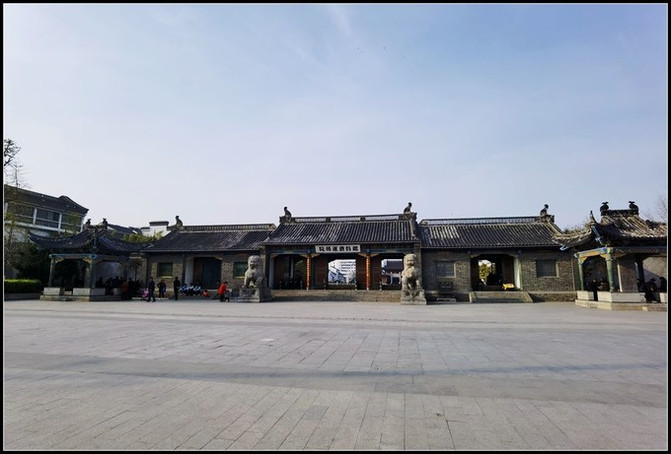
The Jin, Yuan, Ming and Qing Dynasties established Beijing as the capital, and further dug canal ditches to connect to the north of the river and to the south of the canal in Shandong to connect all parts of the Jianghuai River. In particular, Kublai Khan of the Yuan Dynasty dug rivers such as the Jeju River, Huitong River, and Tonghui River, so that the Grand Canal directly ran through the north and south, directly connecting the major economic zones in the north and south. It became another major change in the history of China's canal changes since the Sui Dynasty., laid the foundation for the basic direction and scale of the Hangzhou Grand Canal in South Beijing, and promoted the Ming and Qing Dynasties to become the most prosperous period of water transportation. Looking at history, whether the water transport of the North and South Grand Canal was smooth or not played a decisive role in the political situation of feudal dynasties in past dynasties. Especially after the Sui and Tang Dynasties, the excavation of canals and smooth water transportation were all carried out around consolidating and strengthening the rule of the dynasty. Every generation of imperial rulers wanted to use the canal to smooth water transport, take charge of the overall situation and control the country. For hundreds of years in the Ming and Qing Dynasties, the Governor's Water Transport Department Yamen was set up here to supervise and urge water transport matters, and was in charge of the preparation and transportation of grain from the south to the north and salt from the north to the south.

The gate of the Yamen of the Governor's Water Transport Department. The pair of stone lions in front of the yamen are rare stone lions of alum stone in the country. It is said that it was paid tribute from Persia (present-day Iran) in the Yuan Dynasty and has high artistic value.



This large site is the former Ministry Hall, and its building was destroyed in the 1940s. This site in the lobby of the governor's government office now contains 33 pillar foundations.




The China Water Transport Museum is located behind the ruins of the Governor's Office of Water Transport and is a national AAAA tourist attraction. Huai 'an, the capital of canals, has established the China Water Transport Museum to showcase water transport culture. The Huai 'an Water Transport Governor's Office site was one of China's major archaeological discoveries in 2002. The Water Transport Museum was built and integrated with the Water Transport Governor's Office site to completely display the relics and history of water transport to the world.





The Water Transport Museum has a total construction area of 6300 square meters and is divided into two main floors on the ground. The ground building adopts the architectural style of the Ming and Qing Dynasties in my country, with an overall layout of a triangular shape. Ancient water transportation (canal water transportation) tools and ancillary items left behind are displayed here, as well as work and daily necessities in the governor's office. He once served as governor of water transportation and other officials of water transportation. Letters, letters, inks and daily necessities (such as Liu Yan, deputy prime minister in the Tang Dynasty, Fan Zhongyan in the Song Dynasty, Li Sancai and Shi Kefa in the Ming Dynasty, Shi Shilun, Qiqi, Duan Qirui, etc. in the Qing Dynasty), as well as records, securities, measuring tools, and substitutes related to the circulation of grain grains in the past dynasties.




Zhenhuai Building is located directly opposite the Yamen of the Governor's Water Transport Department.



Zhou Enlai's former residence is located at No. 7 Fuma Lane, Huaian District, Huaian City. Zhou Enlai's former residence was the place where Zhou Enlai lived before he was 12 years old. In the spring of the second year of Xuantong of the Qing Dynasty (1910), Zhou Enlai left home with his uncle to study in Northeast China, and has never returned to his hometown since then. In September 1978, after protection and renovation, the former residence was restored to its original appearance when Zhou Enlai left home for Northeast China. On March 5, 1979, Zhou Enlai's former residence was officially opened to the public. Zhou Enlai's former residence covers a total area of 1,987.4 square meters. When we arrived at Zhou Enlai's former residence that day, it was already past 5 p.m., and the former residence had already closed its doors to say goodbye to guests.



The security guard in charge of the exit of Zhou Enlai's former residence was quite reasonable. At our plea, we were allowed to take a look at the exit and take photos. This is the Xihuatang building in the former residence that imitates the residence of Premier Zhou in Beijing's Zhongnan Sea.






After hurriedly taking a look at the flowers in Huai 'an and checking in three scenic spots, our comrades drove us straight to Xuyi.

Hotel stayed in Xuyi County. Xuyi County is a county under the jurisdiction of Huaian City, Jiangsu Province. Xuyi County has a history of more than 2230 years. Today Xuyi is the famous hometown of crayfish.


Three of the comrades who once worked and lived at the Guangzhou Naval Academy returned to Xuyi to work after changing careers. After decades of separation, we were particularly cordial after meeting each other.
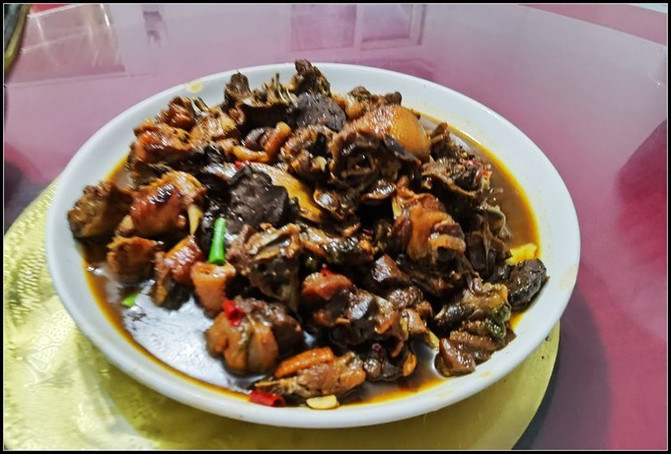
That night, our comrades enthusiastically served us with the famous Xuyi crayfish, braised cock and other local specialties.







After breakfast, our comrades drove us to visit the Ming Dynasty Mausoleum and took a bus to Nanjing in the afternoon.
Accommodation: Nanjing

After breakfast at the hotel, Xuyi's comrades drove us to Xuyi's most famous Mingzu Mausoleum.


The tomb of the Ming Dynasty is located on the west bank of Hongze Lake in Xuyi County, Huaian City, Jiangsu Province. It is the centenary tomb of the Gaozu, great-grandfather and grandfather of Zhu Yuanzhang, the founder of the Ming Dynasty, and the actual burial place of his grandfather. After Zhu Yuanzhang founded the Ming Dynasty, he posthumously honored his great-grandfather Zhu Bailiu as Emperor Xuan, his great-grandfather Zhu Sijiu as Emperor Heng, and his grandfather Zhu Chuyi as Emperor Yu. He built the ancestral tomb in the 19th year of Hongwu (AD 1386), and posthumously buried his grandfather Zhu Chuyi, great-grandfather Zhu Sijiu and his great-grandfather Zhu Bailiu. The following year, he built a temple in front of the mausoleum. In the 11th year of Yongle (AD 1413), Zhu Di built a Lingxing Gate and a wall, and the entire ancestral tomb was completed.









In the 19th year of Kangxi of the Qing Dynasty (1680 AD), the Mingzu Mausoleum and Sizhou City were flooded. After sleeping on the bottom of Hongze Lake for more than 300 years, it was not until 1963, when the water level of Hongze Lake dropped that the Mingzu Mausoleum could be seen again. After more than 300 years of long-term erosion and impact of the lake water, the tombs have been leveled. Most of the original brick and wood buildings on the ground have been destroyed. Only the ruins of the Lingxingmen, the main hall, the east and west verandas and the remaining more than 30 large pillar foundations and bricks There are 3 arch buildings, but most of the 21 pairs of stone statues on both sides of the Shinto are intact. However, the wooden buildings have disappeared, leaving only the city walls of Wailuo City and the stone statues that were later excavated and restored.

The construction of the Mingzu Mausoleum took nearly 30 years, basically imitating the regulations of the Tang and Song emperors. The general plan of the cemetery is rectangular and has three walls: the outside is a tucheng with a circumference of 3 kilometers; the middle is a brick city with a circumference of 1.1 kilometers; the inside is an imperial city with a circumference of 1.1 kilometers; and the inside is an imperial city, with a main hall, a county service hall, a divine kitchen, a fasting room, a warehouse, a slaughter pavilion, a jade belt bridge, etc. On both sides of the Shinto in front of the mausoleum, there are 21 pairs of stone statues, arranged on the 850-meter-long central axis from north to south. The stone carvings are huge and finely carved. The largest one weighs more than 20 tons, and the smallest one weighs more than 5 tons. There are 2 pairs of unicorns, 6 pairs of stone lions, 2 pairs of Shinto stone pillars, 2 pairs of horse officials, 1 pair of stone horses, 1 pair of horse guards, 2 pairs of civil ministers, 2 pairs of generals, and 2 pairs of chamberlain. These stone carvings are grand in scale, superb in craftsmanship, and smooth in lines. The overall style is different from the Fengyang Imperial Mausoleum, the Xiao Mausoleum and the Ming Tombs, and is similar to the style of the Song Mausoleum stone carvings.









The bottom of the lake has been sleeping for three hundred years, and when he wakes up, a stone statue is born.







The Huai River has been submerged for 300 years, and the Mingzu Mausoleum has a beautiful scenery.






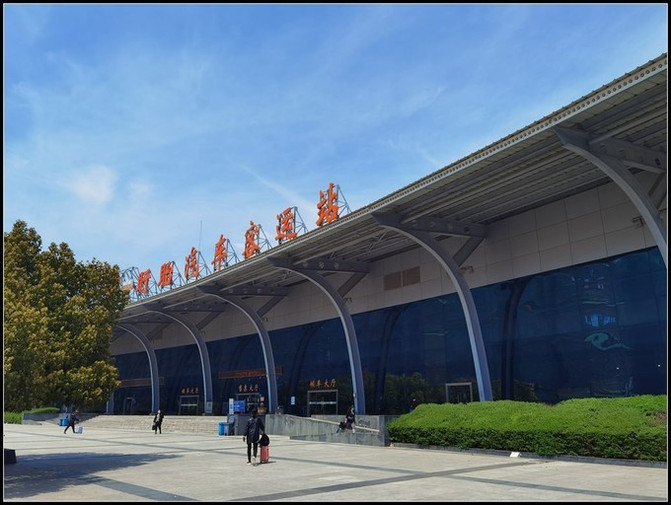
After our comrades enthusiastically accompanied us on a tour of the Mingzu Mausoleum, they invited us to eat local specialties at noon. Their warm hospitality really made us overwhelmed. After lunch, we declined their repeated requests and hurried to Xuyi Passenger Terminal and took a bus to Nanjing.


Nanjing is my hometown. I came back to see my mother, who is in her 90s. It started to rain in Nanjing today, so I stopped going out.
Accommodation: Nanjing

For breakfast in Nanjing, you can use soup dumplings and duck blood vermicelli soup.


Tour the Ming City Wall in Nanjing in the drizzle.

Nanjing's Ming City Wall was built in 1366 and was fully completed in 1393. The city was built according to the direction of Nanjing's mountains and water systems. It benefited from the mountains and rivers and created an annular pattern of the north and south from the inside to the outside. Among them, the city wall of the capital meanders 35.3 kilometers. It is not only the largest city wall in China, but also the largest city wall in the world. It is an outstanding representative of ancient capital construction. Nanjing Ming City Wall is a masterpiece of ancient China's military defense facilities and wall construction technology. Regardless of its historical value, ornamental value, archaeological value, architectural design, scale, function and other aspects, the Nanjing Ming City Wall cannot be compared with it at home and abroad, and it has been successfully selected as the world's largest city wall by the World Records Association.

The top of the Nanjing Ming City Wall was paved with bricks and built into "crenellations". It was a jagged low wall on the outer side of the top of the city wall, and there were stone drainage channels to drain rainwater. Drainage holes are also provided at certain distances at the base of the city to drain the stagnant water on the inside of the city wall out of the city. Therefore, Nanjing's basic engineering and protective engineering are relatively solid, so it has stood for more than 600 years. The city wall is still 21.35 kilometers away and is still the largest brick city in China and designated as a national key cultural relic protection unit. The existing Ming City Wall in Nanjing is Yingtianfu City, or the capital. There are 13 gates and 2 water gates. There are also 13616 creases and 200 bunks on the city wall for military defense. There are also bell towers and drum towers built in the center of the city.

Nanjing's Ming City Wall is a masterpiece of ancient Chinese military defense facilities and city wall construction technology. Regardless of historical value, ornamental value, archaeological value, architectural design, scale, function and other aspects, domestic and foreign city walls cannot be compared with them. It can be said to be another historical wonder after the Great Wall of Qin in China.


Tall city walls and scientific city wall sluice gates.
Day 6: Nanjing
Today, I went to Zhonghua Gate, Da Baoen Temple, Lao Gate East, and Confucius Temple to see the attractions in Nanjing.
Accommodation: Nanjing


Visit the Zhonghua Gate of the Ming City Wall in Nanjing.

Zhonghua Gate is one of the thirteen gates of the Ming Dynasty capital on Nanjing's Ming City Wall. It was originally named Jubao Gate. It is located at the southern end of Zhonghua Road in Qinhuai District, Nanjing. It faces north and south. It is the largest existing gate in China. It is an outstanding representative of ancient defensive buildings and occupies an important position in the history of city wall architecture in the world. It is also the most well-preserved, most complex and largest fortress wengcheng in the world. It is known as the world's largest wengcheng. The Zhonghua Gate has a strict layout and unique structure. It is an important physical material for studying ancient Chinese military facilities. It occupies an important position in military, historical, cultural and urban construction history.

Zhonghua Gate is a beet-shaped inner Weng City gate. There are three inner Weng City gates, with a total of four gates and walls. A Weng City is arranged between every two walls. The Weng City has a beet-shaped structure. Each gate has double iron doors and a thousand-pound gate that can be activated up and down. There are bolt grooves inside for wooden bolts to close the gate tightly. The main city gate is divided into three floors, with a total of 27 soldiers hiding caves, which can hide more than 3,000 soldiers. Before and after Zhonghua Gate, there are inner and outer Qinhuai River runoff running across the east and west. In the south, Lianchanggan Bridge and in the north, Zhenhuai Bridge is the southern traffic throat of Nanjing's old city.

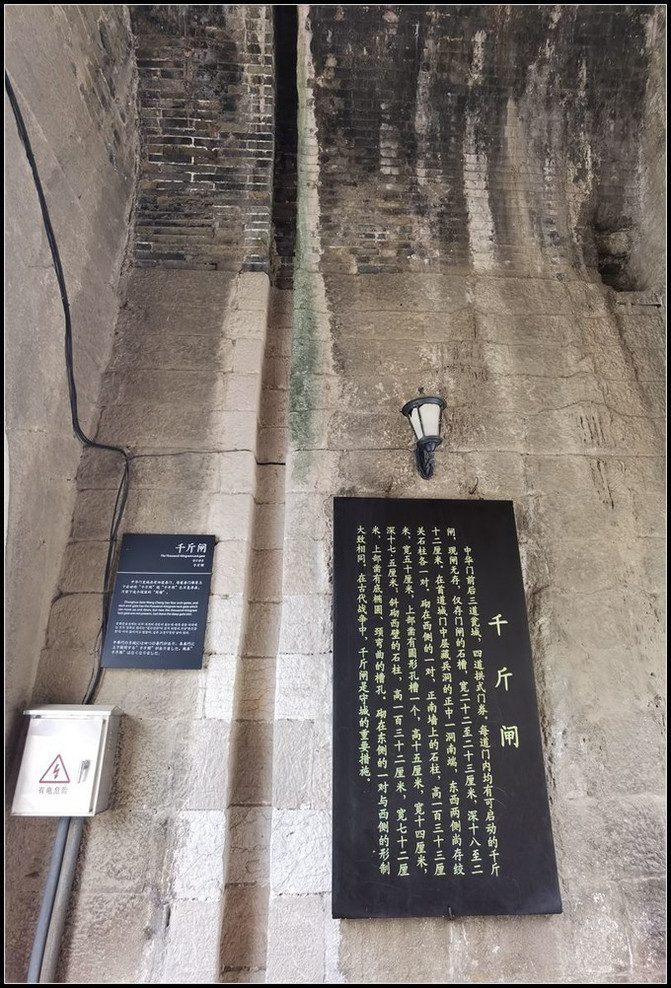

Soldiers Cave on Wengcheng

Zhonghua Gate was built during the Yang-Wu period and was originally called Jubao Gate. In 1931, the National Government changed its name to Zhonghua Gate, and Chiang Kai-shek inscribed the plaque "Zhonghua Gate". In November 2012, the Nanjing Ming City Wall, where the Zhonghua Gate is located, was included in the preliminary list of China's World Cultural Heritage.




In the early years of the Ming Dynasty, when Jubao Gate was built, a strict inspection system was adopted to ensure the quality of the city wall bricks. The names of the brick makers and supervision officials were printed on the side of each brick. Once unqualified products were found, they were immediately held accountable. This is the first quality tracking system adopted in the world. Because there is a strict quality tracking system and can be strictly implemented, the quality of Yingtianfu inner city wall, including the Jubao Gate city wall bricks, is very good. Despite the change of dynasties, until the modern era six hundred years later, the Ming city wall and Zhonghua Gate are still well preserved.


The Inner Weng City of Zhonghua Gate, a military facility, played a very important role in ancient cold-weapon wars. When there is an enemy attack, you can put the enemy into the city gate and play hard to get, then close each city gate, cut the enemy into three sections, and annihilate them separately. This is the so-called catching turtles in a jar.


The wide horse path of Zhonghua Gate allows the city generals to ride directly to the gate from under the city, which is extremely convenient.



The siege weapon of cold weapon warfare: strong crossbows

The defensive weapon of cold weapons war: rolling nail barrel


A siege weapon in cold weapon warfare: stone thrower


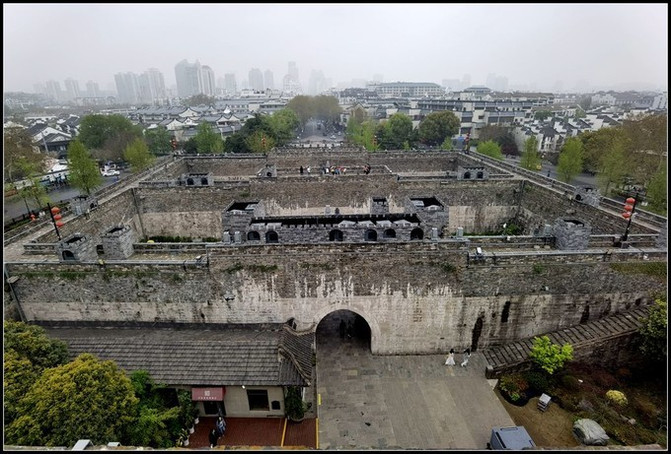





Legend has it that Jubao Gate was built and collapsed repeatedly when it was first built. Therefore, Zhu Yuanzhang listened to the advice of his advisers and forcibly recruited Shen Wansan, a wealthy businessman in the south of the Yangtze River, to bury the cornucopia here. Then the construction went smoothly. After the gate was completed, it was named Jubao Gate. This place is a treasure basin buried.


The moat of Nanjing City is also the famous Qinhuai River.
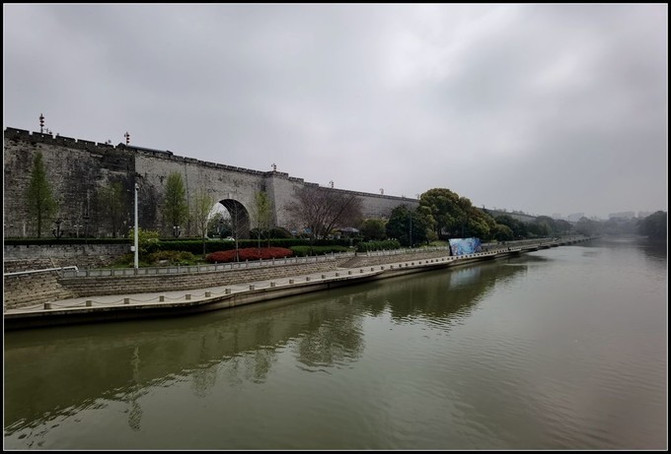
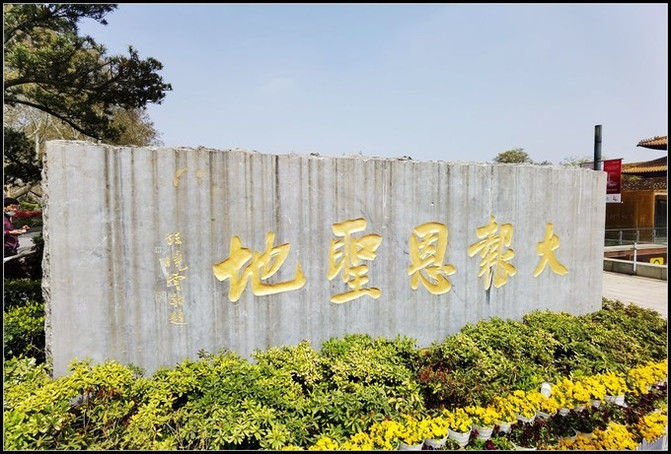
After exiting the gate of Zhonghua Gate, you will reach the Dabaoen Temple for about five minutes on foot from Changgangqiao.


Dabaoen Temple is the oldest Buddhist temple in China's history. Its predecessor was Jianchu Temple and Ashoka Pagoda built during the Chiwu Period of Eastern Wu. It is the second temple in China after the Baima Temple in Luoyang and the first Buddhist temple established in southern China. The Buddhist center of China, together with Linggu Temple and Tianjie Temple, is known as the Three Major Monasteries in Jinling, and has jurisdiction over hundreds of temples. Dabaoen Temple was built by Zhu Di, the founder of the Ming Dynasty, to commemorate Zhu Yuanzhang, the founder of the Ming Dynasty, and Empress Ma. It was rebuilt on the original site of Jianchu Temple in the tenth year of Yongle of the Ming Dynasty (1412), which took 19 years. The construction of Dabaoen Temple is extremely elegant, and it is built in full accordance with the standards of the imperial palace. It is splendid and bright day and night. The entire temple is extremely large in scale, with more than 30 temples, 148 monasteries, 118 corridor rooms, and 38 scripture rooms. It is the largest and highest-specification temple in Chinese history and the first among all temples. Unfortunately, this temple was destroyed in the war of the Taiping Rebellion.
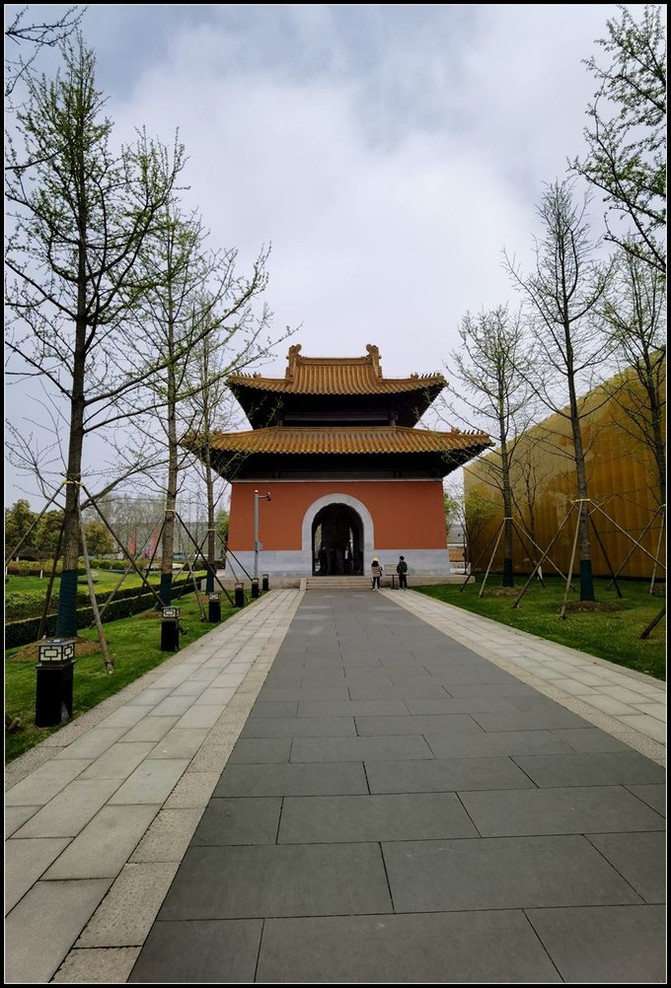
The two imperial stele pavilions are located on the north and south sides of the central axis, and the south is the imperial stele erected by Emperor Yongle. In the north is the Imperial Monument of Emperor Xuande.


The Dabaoen Temple site is the highest-specification, largest and most completely preserved temple site in China. In 2008, a large number of world-class cultural relics and relics, such as the only true bone of the Buddha's roof, induction relics, relics of all saints, and the Qibao Ashoka Pagoda, were unearthed from the underground palace of Changgan Temple, the predecessor of Dabaoen Temple. Ranked as the top ten new archaeological discoveries in the country in 2010. In 2013, it was approved and announced by the State Council as a national key cultural relic protection unit. At the end of 2015, the Dabaoen Temple Heritage Park was officially opened.

In the tenth year of Yongle of the Ming Dynasty (1412), Zhu Di, the founder of the Ming Dynasty, ordered the Ministry of Works to rebuild the Dabaoen Temple and the nine-story glazed pagoda in the name of commemorating the Emperor Taizu of the Ming Dynasty and Empress Ma. In accordance with the regulations of the palace, more than 100,000 civil servants and craftsmen from all over the world were recruited. The cost was 2.5 million taels of money, grain, silver, and millions of money. It took 19 years to complete the project. Based on the martial arts of Da Neitu, a nine-level five-color glazed tower was built, called the First Tower, and the temple was called Da Baoen Temple. From the early years of the Ming Dynasty to the early Qing Dynasty, the Glazed Pagoda of Dabaoen Temple was the most distinctive landmark building in China. It was also known as the largest pagoda in the world. It was also known as China's great antique and Yongle's great kiln vessel. This is a replica of the unearthed glazed tower components.

The Gilded Seven Treasures Ashoka Tower is 1.1 meters high, 40 centimeters wide and has a total weight of 50 kilograms. It is the largest Ashoka Tower found in China and the world, and can be called the king of the Ashoka Tower in the world. The body of the tower is inlaid with gems and carved with Buddha statues and scriptures. It is still exquisite after thousands of years. Based on the inscription records and double verification with X-ray detection, two sets of gold and silver coffins are enshrined in the body of the tower, which contain rare Buddhist relics such as the true bone of the Buddha's roof and ten induction relics.

A golden coffin that holds the true bones of the Buddha's roof.


The protection site of the Dabaoen Temple site.




The main body of the light protective tower was rebuilt on the ruins of the Liuli Tower of Dabaoen Temple. The tower has a total of 9 floors and is made of light steel structure and glass, and the exterior facade is composed of glass curtain walls. The existing elevator in the tower provides direct access to the top of the tower. There is a grand modern underground palace built at the bottom of the tower.

In the Southern Dynasty, there are 480 temples. In the misty rain and rain, the origin of the 480 temples in Du Mu's two poems is the Da Bao 'en Temple. The Da Bao' en Temple has gone through various dynasties and has names such as Changgan Temple and Tianxi Temple. From the predecessor of the Da Bao 'en Temple Tower, the glaze tower of the Ming Dynasty to the today's lightweight protected glass tower, the Sang Hai Cang Tian, and the wind and clouds meet. This is the past and present life of Nanjing Da Bao' en Temple.


Sightseeing corridor at the top of the tower

Large-scale, novel and modern, and resplendent underground palace


In the middle of the underground palace is the reclining statue of Sakyamuni. Under the light of the colorful laser rainbow, it looks very sacred, solemn and beautiful.




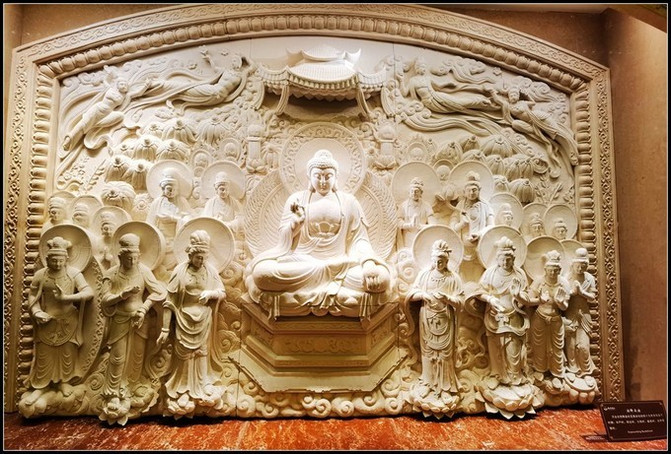







Laomen East is located east of Zhonghua Gate in Qinhuai District, Nanjing. Because it is located east of Zhonghua Gate in Nanjing, it is called Gate East. It is opposite to Laomen West and is an important part of the Qinhuai Scenic Belt of Nanjing Confucius Temple. Mendong is a gathering place for traditional folk houses in Nanjing. Since ancient times, it has been a place where merchants and scholars gathered in Jiangnan, and aristocratic families lived. Today's Laomen East Historical and Cultural District has also been developed in recent years.






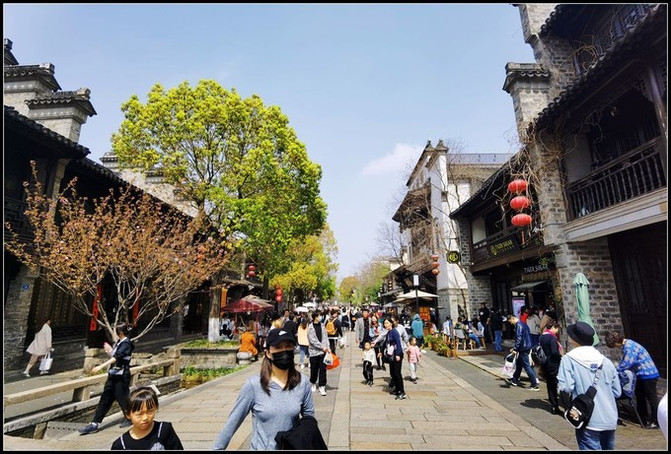
Laomen East Historical and Cultural District starts from Changle Road in the north, Ming City Wall in the south, Jiangning Road in the east, and the Inner Qinhuai River in the Zhonghuamen Castle section in the west. It covers a total area of about 700,000 square meters and has always been one of the core functional areas of Confucius Temple in history. We have opened folk crafts such as Jinling Sutra Carving, Nanjing White Bureau, as well as Deyun Society, handmade kites, cloth painting, bamboo carving, paper-cutting, and marionettes, and launched a variety of traditional food snacks in Nanjing.


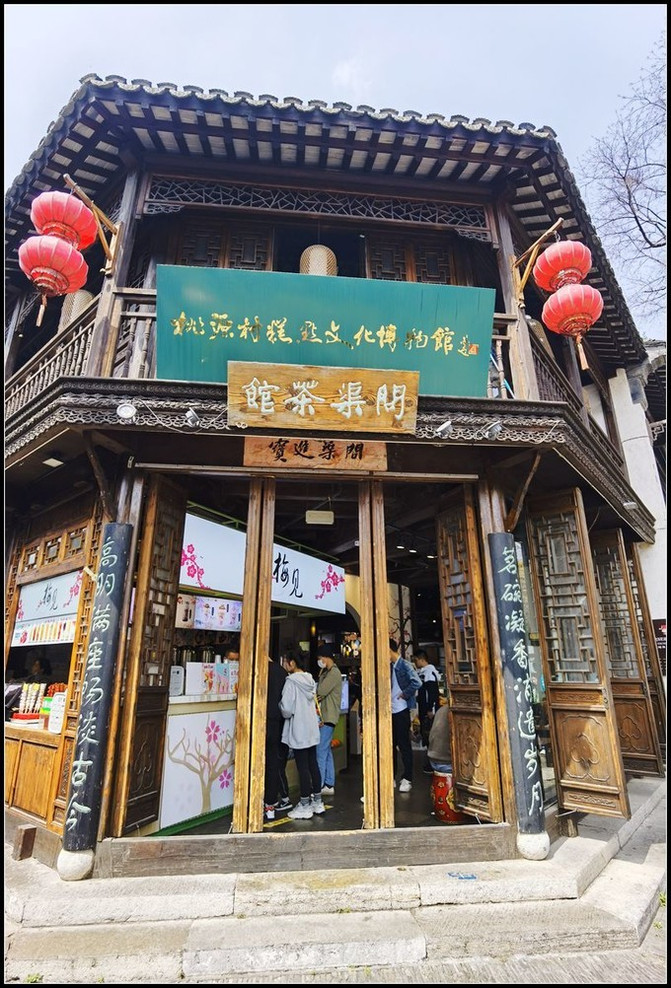






Nanjing Confucius Temple is a famous tourist attraction in the country and a well-known tourist attraction at home and abroad. It receives more than 100,000 tourists on weekdays, and more than 300,000 tourists every day during holidays.


Confucius Temple serves no less than 200 kinds of traditional foods and snacks. The food culture of Confucius Temple has a long history, dating back to the Six Dynasties. It was especially prosperous in the Ming and Qing Dynasties. Various cuisines and snacks competed for extraordinary achievements and unique flavors. Since the reform and opening up, the municipal government has explored and sorted out scattered folk snacks, innovated on the basis of inheriting traditional characteristics, and formed Qinhuai flavor snacks represented by the eight unique qualities of Qinhuai.




Salted duck is a famous specialty of Nanjing. It belongs to Jinling cuisine and is one of the representatives of Jinling cuisine. It is also called osmanthus duck and is a geographical indication product in China. Because Nanjing is nicknamed Jinling, it is also called Jinling Salted Duck. It has a long reputation and has a history of more than 2,500 years. Nanjing salted duck production has a long history and has accumulated rich experience in production. The produced salted duck skin and white meat are tender, fat but not greasy, fragrant and delicious, and are characterized by aroma, crispy and tenderness.







Going to Niushou Mountain Scenic Area today is good and worth a visit. On the return journey, take the subway directly to Gulou Park.
Accommodation: Nanjing

After breakfast, take a bus to Nanjing Niushou Mountain Scenic Area for a tour.


Niushou Mountain is located in Jiangning District, Nanjing City and consists of many large hills such as Niushou Mountain, Zutang Mountain, and Jiangjun Mountain. The mountain height is 248 meters high, and it is named because the two peaks of east and west face each other like horns. Niushou Mountain is a famous Buddhist mountain in China with profound cultural heritage. It is the opening place and birthplace of Niutou Zen Buddhism. Niushou Mountain has a pleasant scenery. Every spring, Jinling people travel in the city, so it is known as the Spring Ox Head. During the Qianlong period of the Qing Dynasty, the smoke haze with the head of oxen was included in the 48th Scenery of Jinling.

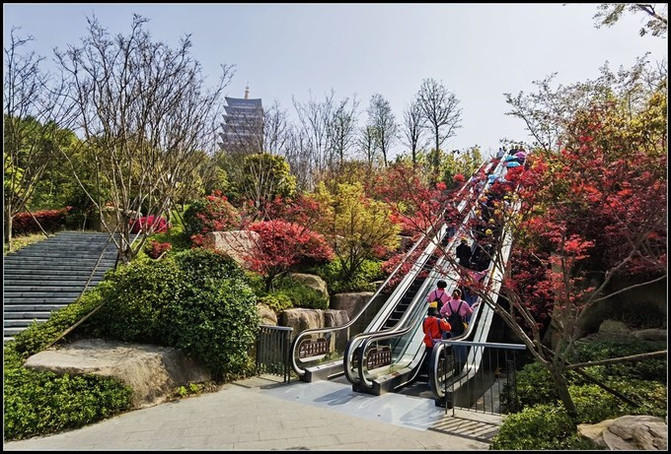
The central area of Niushou Mountain Scenic Area has a total area of about 9.51 square kilometers and consists of five major areas: Cultural Zen, Nature Zen, Life Zen, Ecological Zen, and Art Zen. After entering the scenic spot from the ticket office, you have to take an environmentally friendly car (20 yuan/person round trip) to the foot of the mountain. There are trail elevators both up and down the mountain, so you don't get tired going up the mountain.


The Buddha Top Tower is one of the landmark buildings in the Buddha Top Holy Land. It has a building height of about 88 meters. The Buddha Top Tower has a construction area of 5065 square meters and has nine levels and four sides. It echoes the Hongjue Temple Tower in the Ming Dynasty and recreates the history of Niushou Mountain. The magnificent pattern. There is a sitting statue of Piluzhana Buddha in the tower. There is an all-bronze diamond bell imitating the Tang style, and various Buddhist collections are also displayed. The entire Buddha Top Tower is magnificent in shape, fully showing the ancient charm of Tang style. Climbing the tower and looking far away, you can enjoy the beautiful scenery of Niushou Mountain in all four seasons.



Foding Palace is located at the West Peak of Niushou Mountain and is the core building of the Foding Holy Land.

Foding Palace is built on a mine pit left over from history and is a modern building of the type of deep pit. The total construction area is about 136,000 square meters. Together with the Buddha Top Tower, it forms a new scene of the West Peak of Niushou, echoing the East Peak of Niushou, recreating the grand scene of the two peaks of Niushou and the double towers standing side by side. The entire Buddha Top Palace has the theme of offering Buddha's crown bone relics. The exterior is divided into two parts: a large dome and a small dome, implying external support and internal support. The large dome is shaped like a Buddha's cassock covering the small dome, symbolizing the Buddha's infinite blessing; the lower part of the small dome is in the shape of a lotus throne, and the upper part is in the shape of a Mani pearl. The combination of the upper and lower forms the sacred image of a lotus holding a treasure.

The interior of Foding Palace consists of the Zen Temple on the ground and the underground palace on the ground. The interior space has nine floors, three floors above the ground and six floors underground. The underground palace is divided into two spaces: the relic hall and the relic palace. The entire Foding Palace is not only the main place to collect the Buddha's crown bone relics and accept worshippers 'prayers, but also a cultural exhibition place that collectively presents the relics culture and the world's Buddhist Zen culture in various artistic methods. It brings together the national religious and artistic circles. The team of experts from the field of architecture aims to achieve the grand goal of a new heritage of world Buddhist culture and a new landscape of contemporary architectural art.





Buddha Peak Cliff "Manjusri Holy Mountain"







The above-ground part of Foding Palace is the Zen Temple, which is 112 meters long from north to south, 62 meters wide from east to west, and has a clear internal height of about 41.2 meters, covering three floors above ground. The entire space covers an area of more than 6000 square meters and is oval in shape. The three colors of yellow, white and gray are used as the keynote, and the mountains and rivers of the world are arranged, allowing people to appreciate Zen while walking. It consists of three parts: the Zen Garden where the Buddha was born and achieved enlightenment, and the Rulian Theater in the middle, showing the Buddha's life. The top of the Zen Temple is the Sara dome, and the pattern comes from the saha tree branches when the Buddha passed away. The dome uses a fully covered light-transmitting film and lights to create the first ray of morning light, the warm sunshine at noon, the rosy clouds in the evening and the moonlight at night. The center is a reclining statue of Sakyamuni cast in all-copper. It has a total length of 7.5 meters. The surface is made of Han white jade and can rotate slowly at 360 degrees, expressing the Buddha's tranquil and tranquil nirvana realm.





On the north and south sides of the Zen Garden are two Zen Garden gardens. On the south side is the Zen Garden, which symbolizes the birth of Buddha. The overall shape is like a lotus flower, and in the middle is a worry-free tree that lives forever. On the north side is a Zen Garden that expresses the Buddha's enlightenment. In the middle is a Bodhi tree that never widens. On the ground, black and white sand and gravel are used to symbolize the chaos of the world and the purity of the Buddha's light.





The architecture of Niushou Mountain Foding Palace is extremely modern, with very high-end building materials and decoration. It is extremely luxurious and elegant, and it is magnificent and breathtaking.


The relics hall in the underground palace of the Buddha Ding Palace in Niushou Mountain is located on the fifth floor underground and requires an elevator to go down to the bottom. The entire relic hall is magnificent, magnificent, solemn and solemn, which makes people involuntarily awe-inspiring. It is worthy of being a new holy place of worship in the Chinese Buddhist world.

The Holy Tower, which enshrines the real relic of the Buddha's head and crown bone, towers solemnly in the center of the hall. It is inlaid with Buddhist "seven treasures" such as gilt, crystal, glass, and gemstones. It combines dozens of traditional crafts such as bronze, gilt, silk enamel, carving, and chisel carving, etc., supplemented by laser projection, making the entire relic hall beautiful, solemn and sacred, and can be called exquisite.








In the center of the relic hall is enshrined the real relic of the top bone of Sakyamuni Buddha. It is a complete skull with a circumference of 35 centimeters and a diameter of 10 centimeters. It is yellow-black in color and has clear hair holes. This is the only real relic of the head and crown bone of Buddha unearthed from the underground palace of Dabaoen Temple in 2008. It is the supreme sacred object in the Buddhist world. After the completion of the Foding Palace, the Chinese Buddhist community decided in 2015 to invite the real relic of the Buddha's roof bone from the Foding Palace on Niushou Mountain for permanent worship.












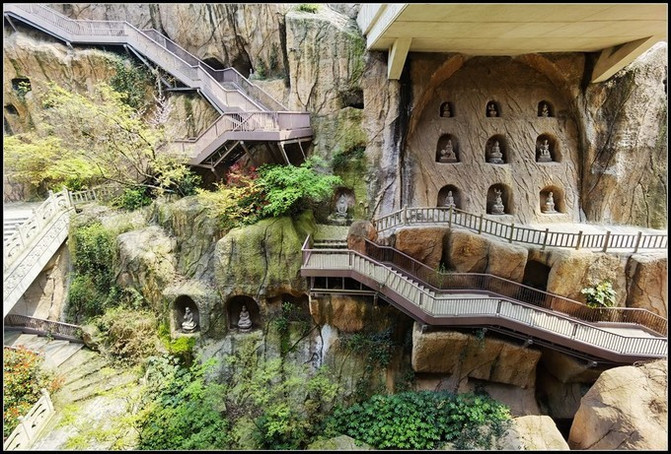








The Hongjue Temple Tower is located on the southwest slope of Niushou Shandong Peak, with an altitude of 180.50 meters

In March, in Jiangnan, cherry blossoms bloom across the mountains and the scenery is charming.


Hongjue Temple was formerly known as Foku Temple, located in the south of Niushou Mountain, and later renamed Pujue Temple. Therefore, Niushou Mountain is also known as Xianku Mountain. Monk Farong of the Tang Dynasty lectured on scriptures here and founded Niutou Zen, which became famous. In the early years of Hongwu of the Ming Dynasty, the temple was renovated on a large scale, renamed Fuku Temple, and later renamed Hongjue Temple.




Hongjue Temple Tower is a very typical Jiangnan pavilions style brick and wood tower. This outer octagonal. The hollow tube structure with square inside and staggered interlayer angles is more popular in ancient towers in Jiangsu. The tower foundation of Hongjue Temple is located on the rocks and is very strong. For hundreds of years, the main body of the tower has not tilted. Although the upper outer wall bricks have partially weathered and fallen off, except for the wooden structure that has been destroyed, the main structure of masonry is still well preserved.




Gulou Park is located in the middle of Nanjing's urban area. Nanjing Drum Tower was built in the 15th year of Hongwu of the Ming Dynasty (1382). Nanjing Drum Tower covers an area of 9100 square meters and towers above Gulou Gang. The five main roads of Beijing East Road, Beijing West Road, Zhongshan Road, Zhongshan North Road and Zhongyang Road meet here. It has always been one of Nanjing's landmark buildings.

The Drum Tower is divided into two floors. The lower floor is built in the style of a city watchtower, 9 meters high. The red walls stand tall and the eaves are facing the wind. There are three ticket gates in the middle, connecting the front and back, and there are Changguan Pavilion inscriptions on top. The superstructure is divided into the central hall and the east and west halls, with water dripping directly outside the pedestal.


When Qianlong went to Jiangnan, he warned Jiangnan officials, which was carved into a "Holy metaphor and precepts stele." Also known as the "Integrity Monument".


Today, I went to visit this unpopular but shocking Yangshan Monument Scenic Area, and went to the Presidential Palace in the afternoon.
Accommodation: Nanjing

The Yangshan Monument Material is located on the southern slope of Yangshan Mountain on the northwest side of Tangshan Town, Jiangning District, Nanjing City. It is the site of the Shenggong Shengde Monument dug by Zhu Di, the founder of the Ming Dynasty, to praise the merits of his father, Zhu Yuanzhang. In order to obtain this stone, thousands of migrant workers exhausted the quarry, but it was never built. Today, it is listed as a national key cultural relic protection unit and has become a tourist attraction for people to visit.

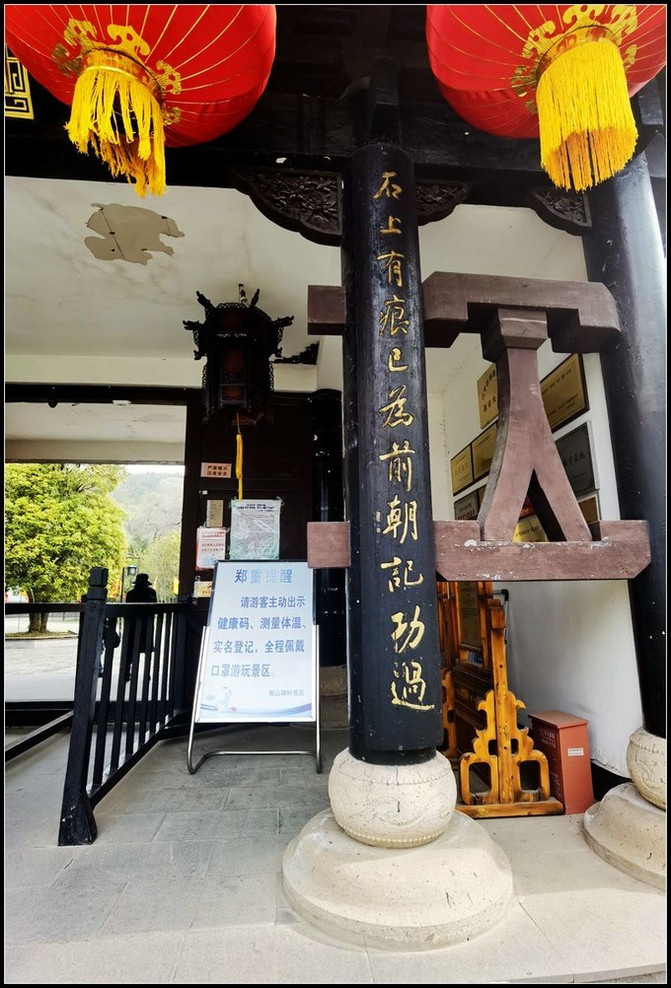

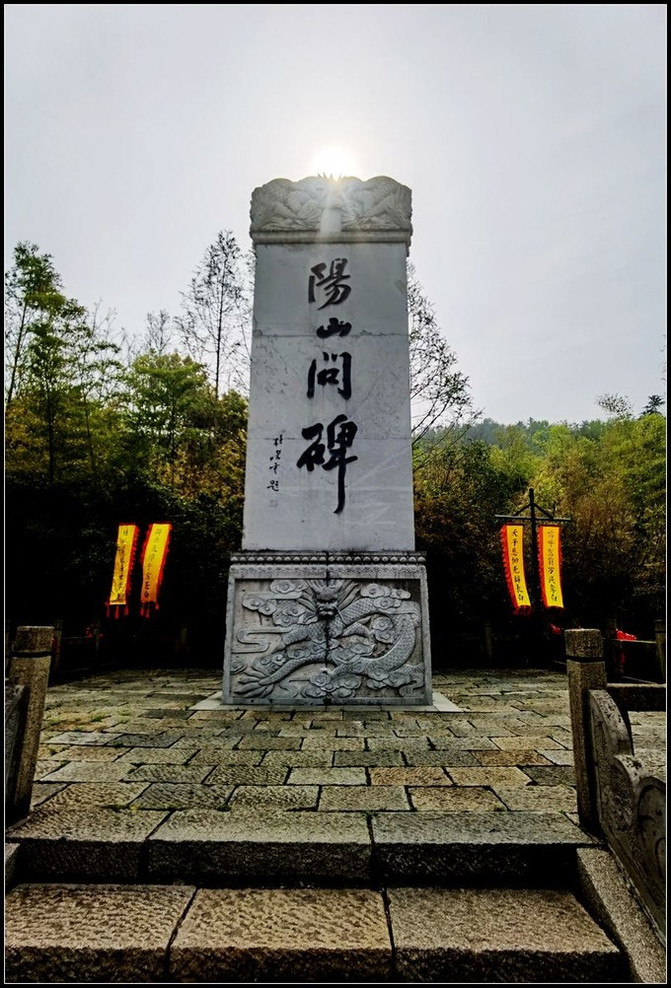

The Ming Culture Village in the Yangshan Monument Materials Scenic Area was designed and built mainly based on the mining of Yangshan Monument Materials, striving to reproduce the historical scenes of the Ming Dynasty.






Yangshan Monument Materials. This is a giant stone carved by Chengzu of the Ming Dynasty for his father Zhu Yuanzhang to build a monument. In 1402 AD, Zhu Di, the founder of the Ming Dynasty, raised an army and won the throne of his nephew Zhu Yunwen. In order to win over people's hearts and stabilize the political situation, he decided to build a giant stone tablet to demonstrate Zhu Yuanzhang's merits. More than 10,000 craftsmen from across the country were recruited to dig three stele materials at the southern foot of Yangshan Mountain. Among them, the stone on the pedestal is 13 meters high, 16 meters wide, 30.35 meters long, and weighs 16,000 tons; the stone on the pedestal is 49.40 meters long, 4.4 meters wide, 10.7 meters high, and weighs about 8799 tons; the stone on the pedestal is 10 meters high, 20.3 meters long, 8.40 meters wide, and weighs about 6,000 tons. If this monument is erected, it will have a total height of 78 meters and a weight of 31167 tons. It will be the world's first monument.





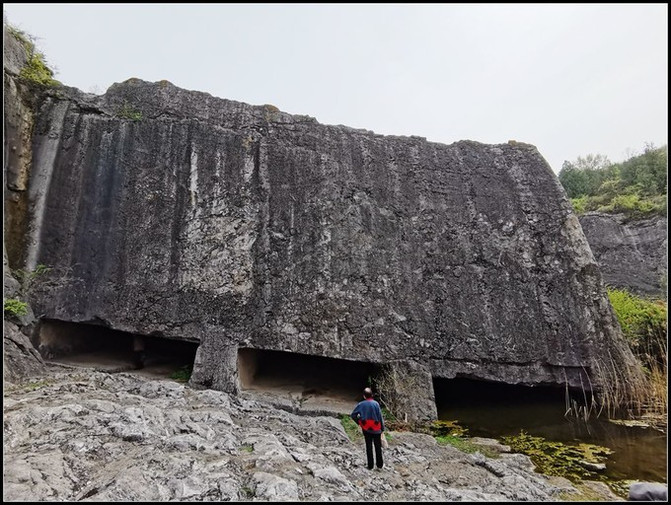
This is the stele seat among the Yangshan stele materials. The stone is 13 meters high, 16 meters wide, 30.35 meters long and weighs 16,000 tons.



This is the head of the Yangshan Monument. The stone is 10 meters high, 20.3 meters long, 8.40 meters wide, and weighs about 6,000 tons.



This is the body of the Yangshan Monument Materials. The stone is 49.40 meters long, 4.4 meters wide, 10.7 meters high, and weighs about 8799 tons.


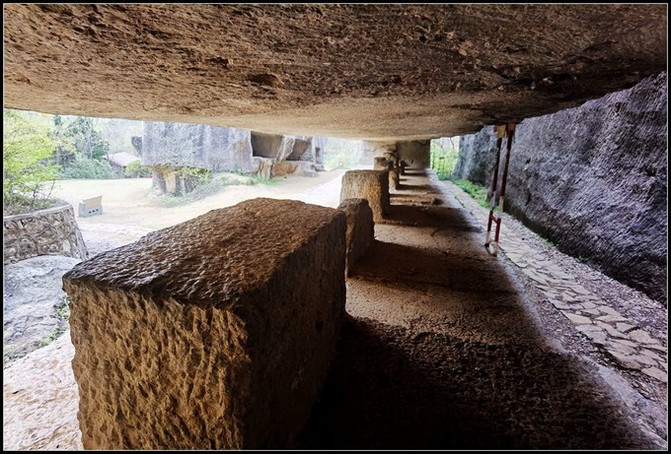


The Yangshan Monument materials are unparalleled in the world. This is the stele of divine skills and virtues that Zhu Di, who was brilliant and ambitious, decided to build for Zhu Yuanzhang in order to show his filial piety to Zhu Yuanzhang to the people of the world. This decision was definitely a foolish move made by Zhu Di, because with the transportation conditions and technology at that time, it was impossible to transport this giant stone material out of the mountain. As a result, this labor-intensive project became a unfinished project. It can be said: "There are traces on the stone that have been used to commemorate the achievements of the previous dynasties, and there is no word in the stele to discuss right and wrong with future generations."

Yangshan Monument Materials are also known as Xiaoling Monument Materials. The Monument Materials are divided into three parts: pedestal, body and forehead. If they are put together and erected, the total height can reach 78 meters and weigh 31167 tons. It is the world's first monument. It can be called a peerless monument material. However, this unique monument material was ultimately not used and remained in place.




The Nanjing Presidential Palace is located at No. 292 Changjiang Road, Xuanwu District, Nanjing City, Jiangsu Province. It is the largest and most completely preserved architectural complex among modern Chinese architectural relics. It is also the main representative of Nanjing's Republic of China architecture. It is an important site in modern Chinese history and has now been turned into the Museum of Modern Chinese History.


The Nanjing Presidential Palace building complex covers an area of about 50,000 square meters. It contains both ancient Chinese traditional Jiangnan gardens and architectural relics from the modern era of the west wind spreading eastward. Its history can be traced back to the Marquis of Guide and the King of Han in the early Ming Dynasty. In the Qing Dynasty, it was built into Jiangning Weaving Office, Liangjiang Governor's Office, etc., and was used as a palace during the Southern Tour of Qianlong in the Qing Dynasty, Kangxi, and Qianlong. After the Taiping Rebellion established its capital in Nanjing, it was expanded into Tianwangfu on this basis. On January 1, 1912, Sun Yat-sen was sworn in as the interim president of the Republic of China and turned it into the Grand Presidential Palace, and later the Presidential Palace of the Nanjing National Government.

On January 1, the first year of the Republic of China (1912), Mr. Sun Yat-sen was sworn in here as the Provisional President of the Republic of China and established the Republic of China. 1912 was designated as the first year of the Republic of China and the Provisional Government of the Republic of China was established.




Since modern times, the Nanjing Presidential Palace has many times become the center of China's political and military affairs and the source of major events. A series of major events in China have occurred here or are closely related to this place. Some important figures have participated here and are now listed as a national key cultural relic protection unit and a national AAAA tourist attraction.






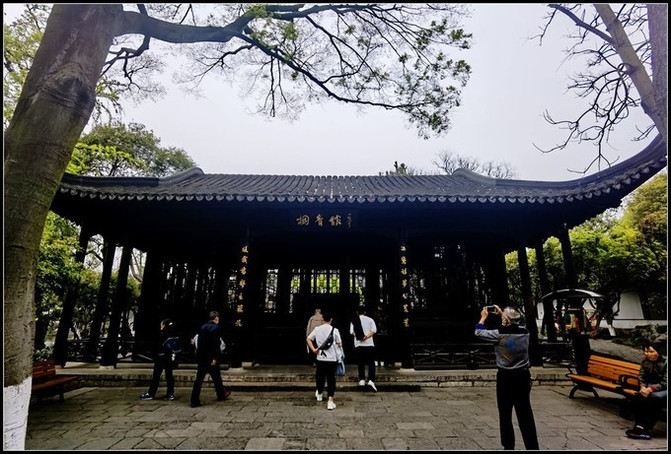

Xuyuan was the garden of the King of Han in the early Ming Dynasty. It was named after the Chinese character Xu in the name Zhu Gaoxu, King of Han. In the Qing Dynasty, it was the Garden of the Governor's Office of Liangjiang River. The Taiping Rebellion expanded it when it built the Tianchao Palace. Because the garden is located on the west side of the palace, it is also called the West Garden and is symmetrical to the East Garden.



Xuyuan is a typical Jiangnan garden and is integrated with the Presidential Palace. Many famous ruins and attractions are still preserved, such as Shifang, Xijialou, Wangfei Pavilion, Yulan Pavilion, Yinxin Stone House, etc.








The Zichao Building in the Presidential Palace is located at the northern end of the central axis of the Presidential Palace. This office building was built under the term of Lin Sen of the National Government. Lin Sen is known as Zichao and has served in the National Government for the longest time, so people are accustomed to calling it Zichao Building. Construction of the building started in 1934 and was completed in December 1935. The main body of the Zichao Building has five floors and six floors partially. The first floor is the office of the Presidential Office of the Secretariat. The second floor is the Office of the President and Vice President. Chiang Kai-shek's office faces south, and Vice President Li Zongren's office faces north. The third floor is the National Government Conference Room. There are also two pine trees planted by Lin Sen in front of the building.


Chiang Kai-shek's presidential office is located in the southeast corner of the second floor of Zichao Building. This is a three-room suite. There is a desk calendar on the writing desk next to the window of Chiang Kai-shek's office. The date of the desk calendar is still fixed on April 23, 1949. This is Nanjing's Liberation Day and the day when the People's Liberation Army invaded the Presidential Palace. History is fixed here. A huge photo of Chiang Kai-shek wearing military uniform hangs above the sofa used to meet guests in the office. The surrounding walls are filing cabinets embedded in the walls, and a matte glass chandelier imported from Lyon, France hangs on the roof. The east room of the office is a lounge with a toilet. The west room is the study and reception room.


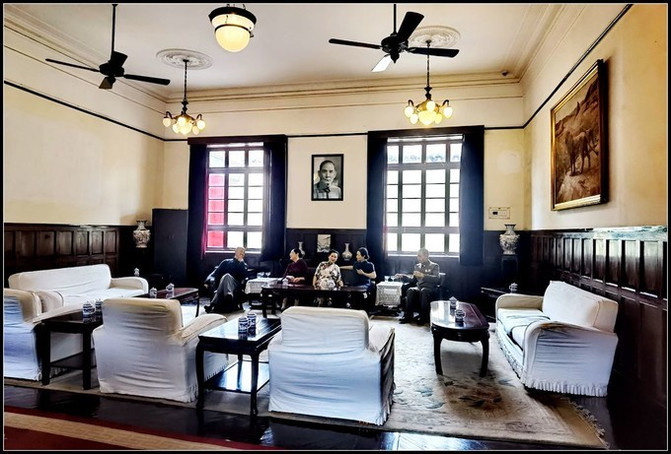





Crested ducks playing in the water in the garden of the Presidential Palace.




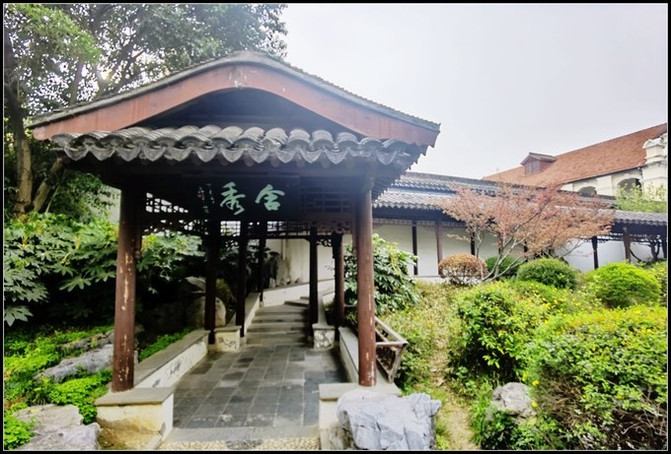

In the corner of the Presidential Palace is the Taiping Heavenly Kingdom Exhibition Hall.




In the corner of the Presidential Palace is the "Ergong Temple" in memory of Tao Shu and Lin Zexu, two wise ministers of the Qing Dynasty


